In Toronto, you’re never very far from a crane. There are so many here — particularly because of the huge demand for new housing — that, in fact, we have more cranes than any other city on the continent, over 220 in the 416 alone. While our streets and our skylines are rapidly changing, there is always another raft of buildings waiting in line behind the scenes at City Hall for their approval. It can take years before the final approval, so here we look at a number of proposed new towers that may some day add to our growing urban canyons. Here’s our list of the top 10 tallest towers that are still awaiting their judgement days.
Let’s start our Top Ten at #14; 310 Front Street West. This mixed-use residential and office tower is currently under review after being submitted for Zoning By-Law Amendment (ZBA) in April of this year. If approved as planned, H&R REIT’s Hariri Pontarini Architects-designed building would stand 69-storeys/235.5 metres tall, and become home to 560 units. The tower could also have a landmark feature of strobe lights shooting out from its top level into the sky, making it hard to miss. They’re also the reason we snuck this one into our Top Ten list.
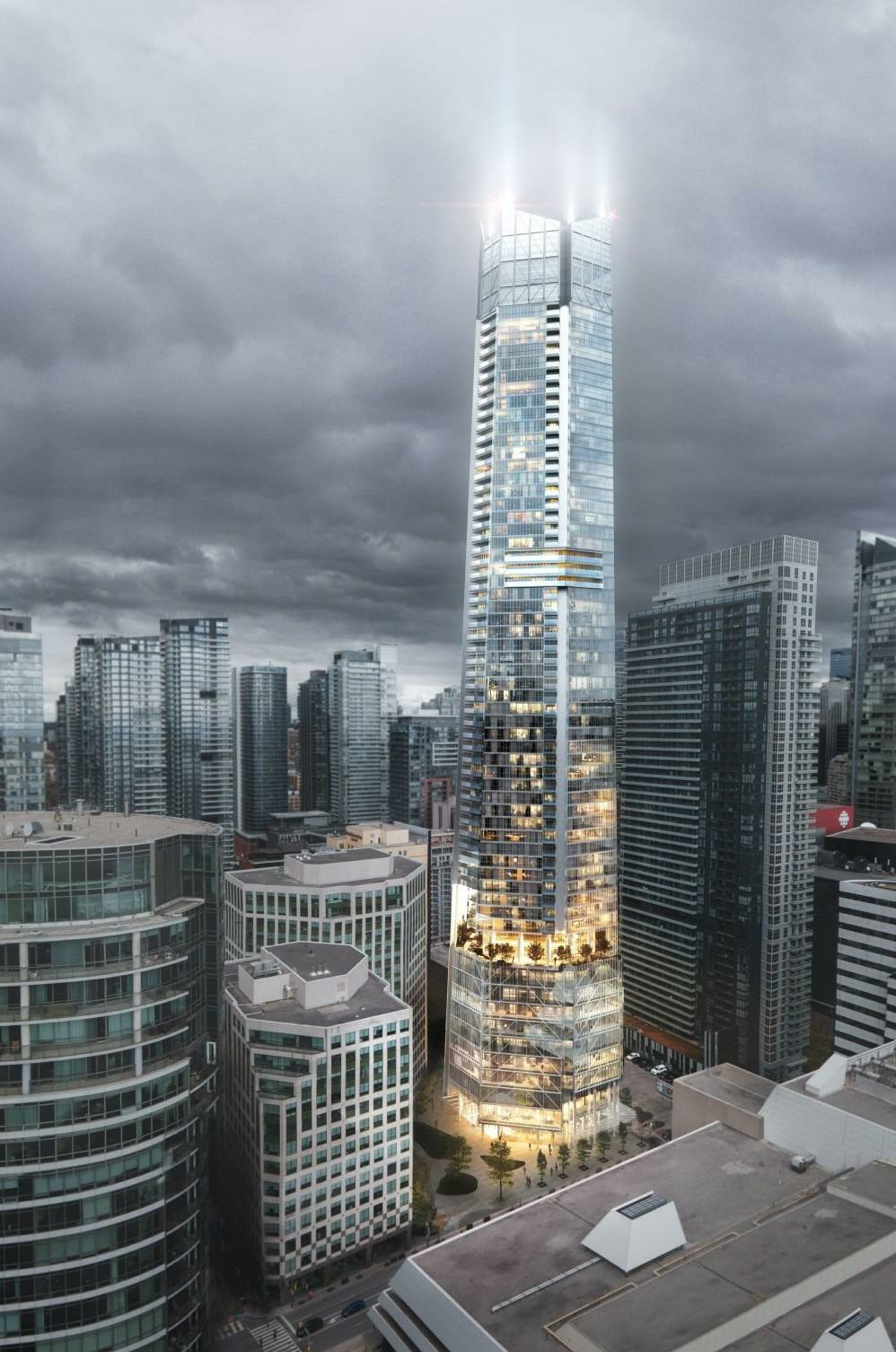
Now, into the actual Top Ten list, at #10; 372 Yonge. Designed by DIALOG for Yonge & Gerrard Partners Inc, Turbo-Mac Ltd, and Trimed Investments Inc, 372 Yonge was submitted to the City in July of 2020 for an Official Plan Amendment (OPA) and ZBA. The initial application was refused, but an updated proposal — located on the northwest corner of Yonge and Gerrard streets — was resubmitted, including for Site Plan Approval (SPA) in September. If approved, the building will stand 74-storeys/248 metres tall, and be home to a total of 415 residential units.
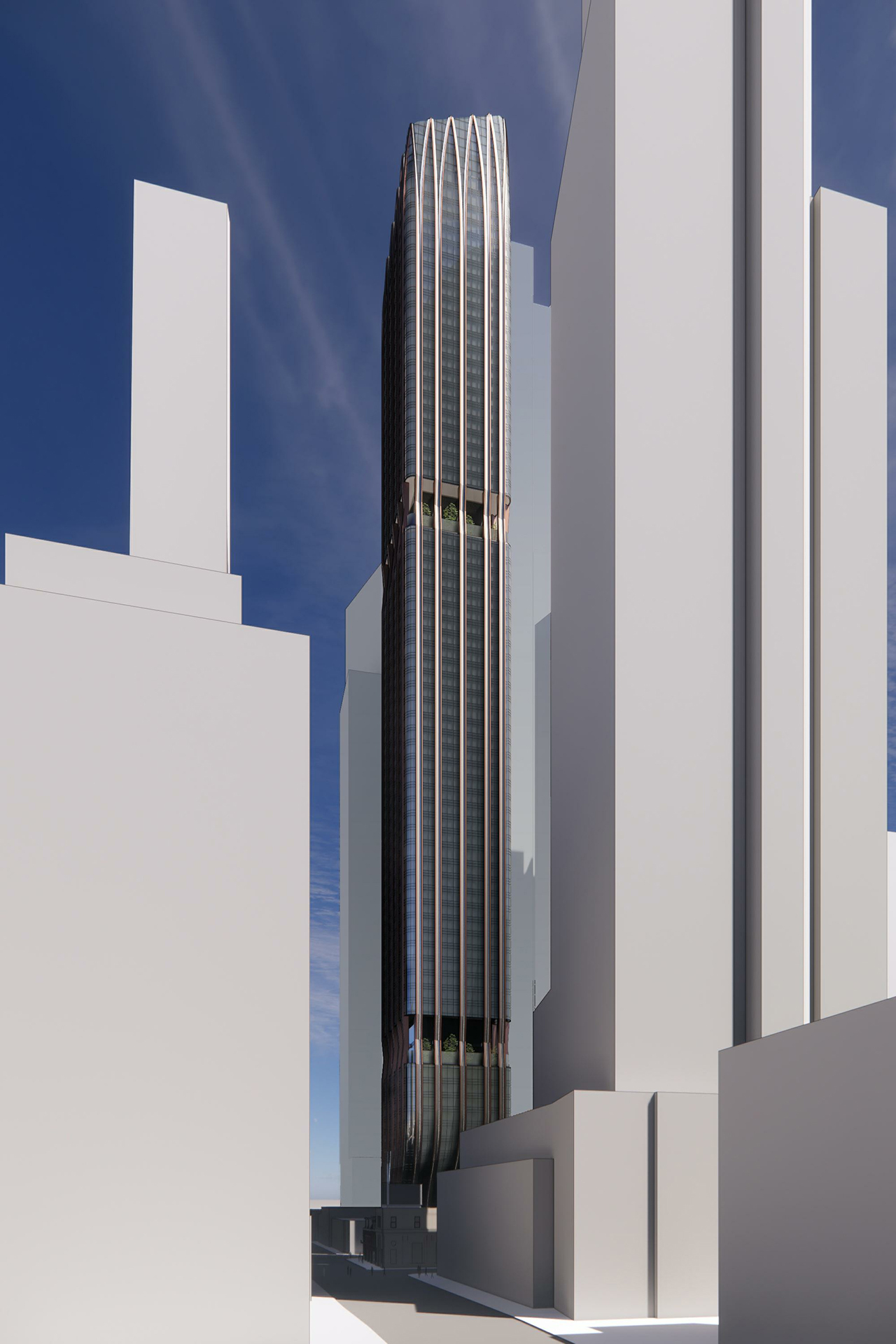
At #9 is 2180 Yonge. With multiple buildings designed variously by Pelli Clarke Pelli Architects, Hariri Pontarini Architects, and Adamson Associates for Oxford Properties Group, and CT REIT, 2180 Yonge was submitted to the City in December of 2020 for ZBA. The proposal includes five towers on the southwest corner of Yonge and Eglinton with a total of 2,701 residential units. The tallest building here is proposed at 70 storeys/253.5 metres.
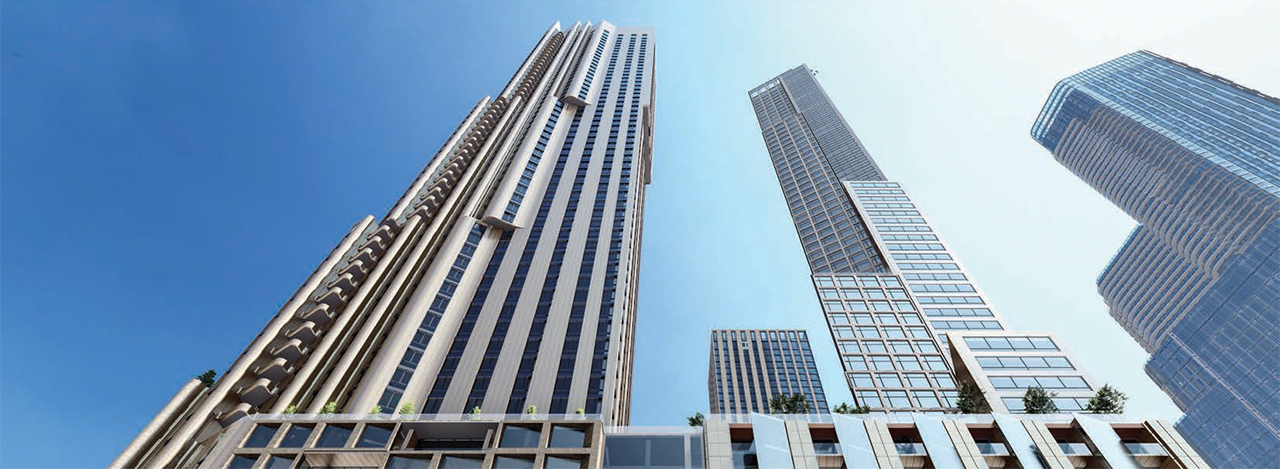
At #8 is 475 Yonge. OPA and ZBA applications have been made to facilitate the redevelopment of the site for two BDP Quadrangle-designed towers for KingSett Capital. While the shorter 75-storey/246.4 metre tower would place at #11 this list, the taller 78-storey/255.25 metre tower on the northwest corner of Yonge and Wood streets puts the whole submission into the Top Ten. Documents were submitted in September and October of this year, and if approved, the towers would house 785 and 826 and residential units.
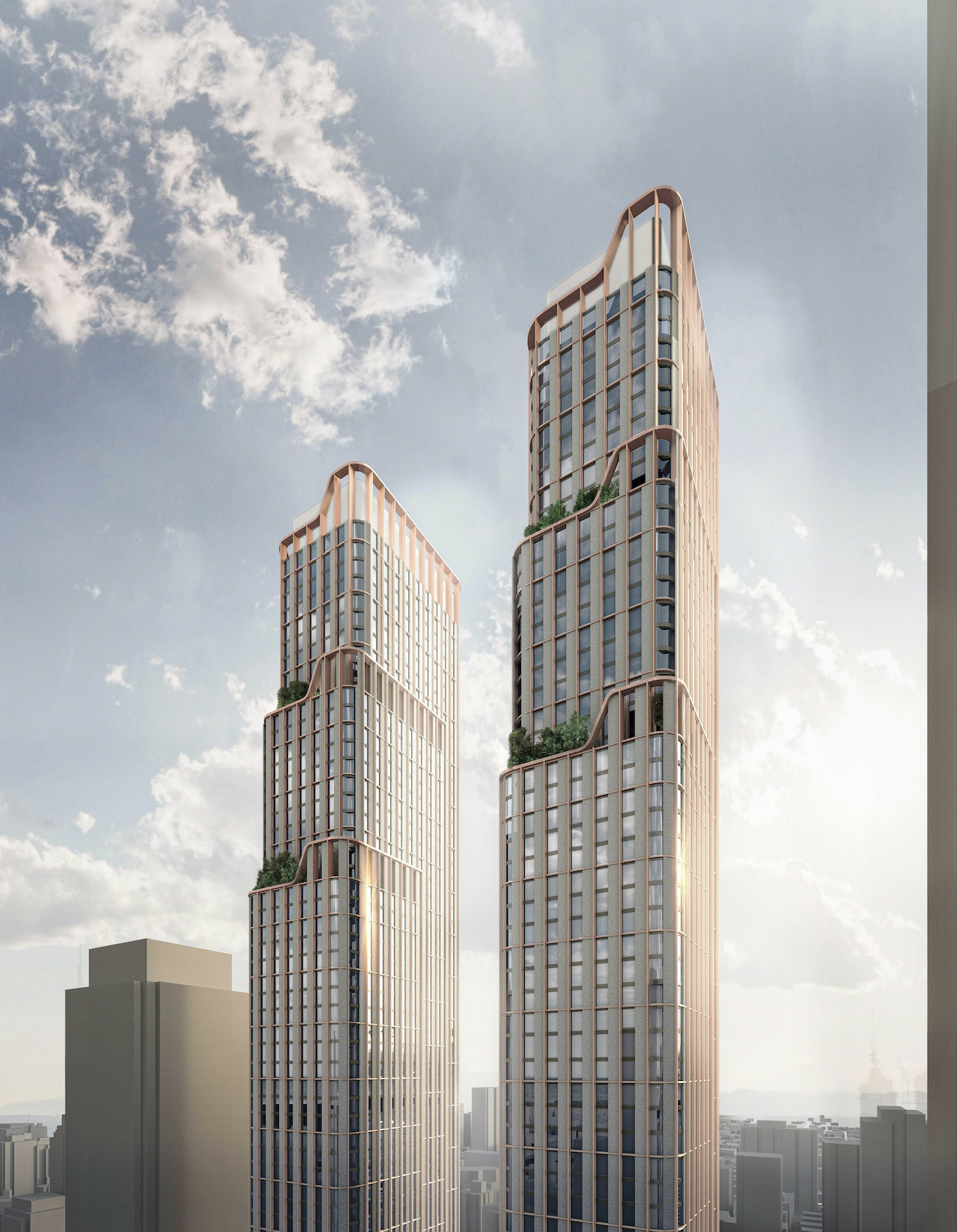
At #7 is 11 Bay. This proposed development — designed by Daoust Lestage Architecture and Hariri Pontarini Architects for QuadReal Property Group and Barney River — is to be an integrated 54-storey/269.45 metre office tower with retail and a conference facility, located at the prime intersection of Bay Street and Queens Quay. It is currently awaiting ZBA approval from the City, which was applied for in September of 2020.
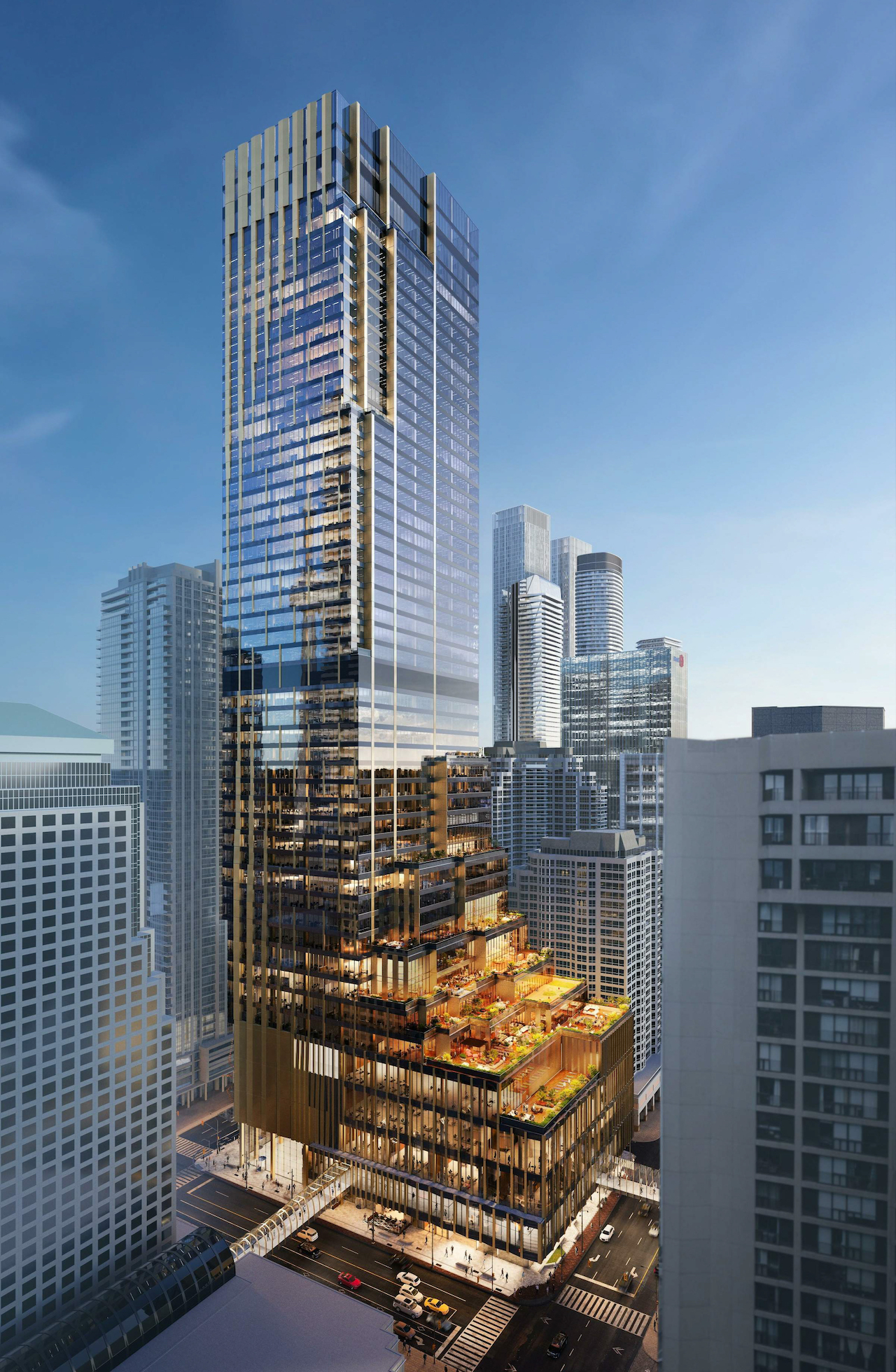
At #6 is Chelsea Green. This site has ZBA approval, but awaits the Planning department’s go-ahead on the SPA for the proposal. The tallest building here is an 86-storey/283.53 metre-tall condo designed by architects—Alliance for Great Eagle Holdings on the southwest corner of Gerrard Street West and Yonge Street. Along with residential use, other buildings on the site include a hotel, office space, and retail, while a new park is also proposed for part of the property.
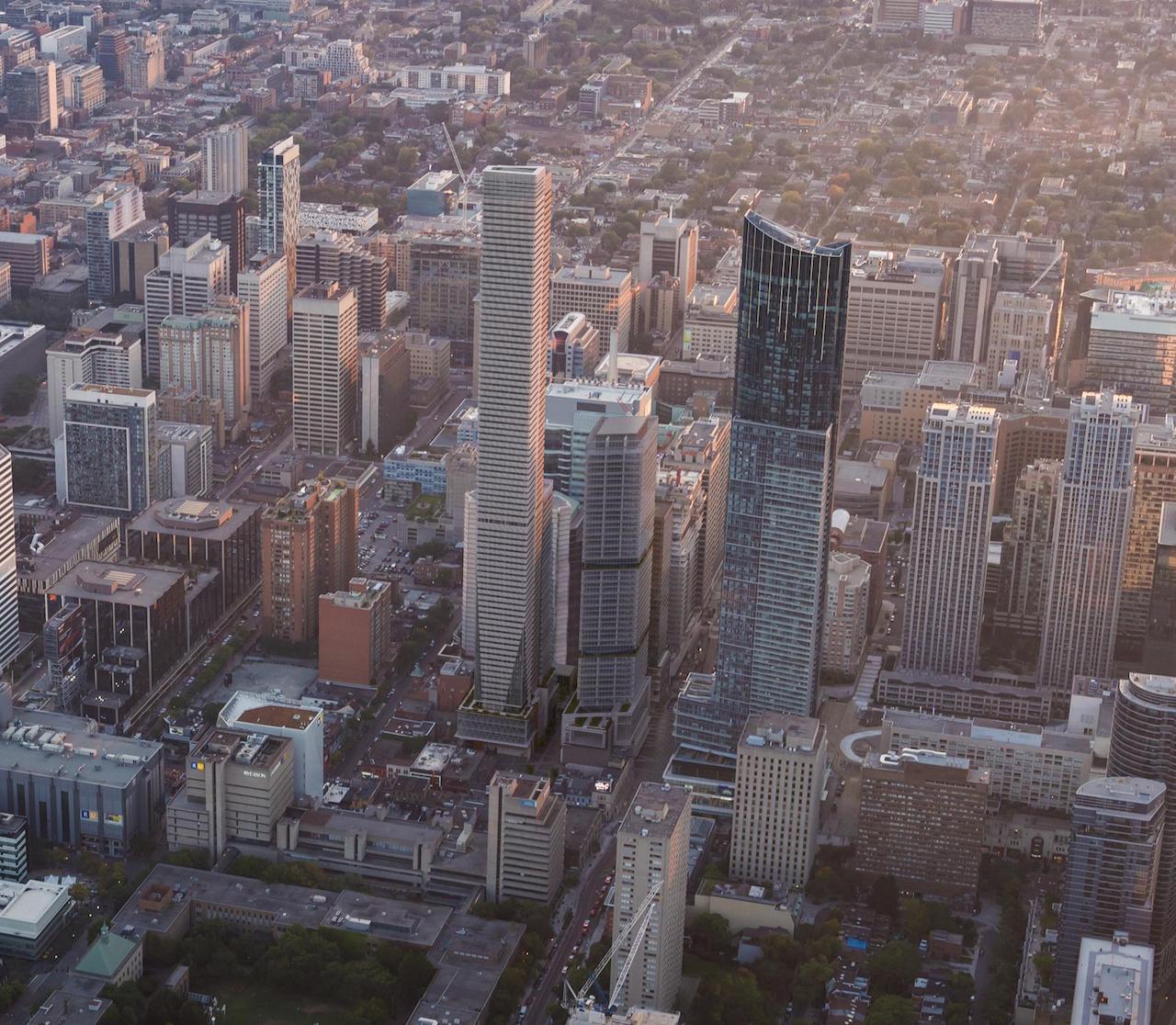
At #5 is Union Centre. Designed by the renowned Bjarke Ingels Group for Westbank Corp and Allied Properties REIT, Union Centre had its OPA and ZBA applications approved by the City last month, but still awaits ratification by the OLT. Union Centre’s SPA remains under review by the City. If built as planned, the building will stand 54-storeys/298.00 metres tall, and be home to 1.7 million ft² of office space at Simcoe and Station streets, and be topped by a terraced green roof.
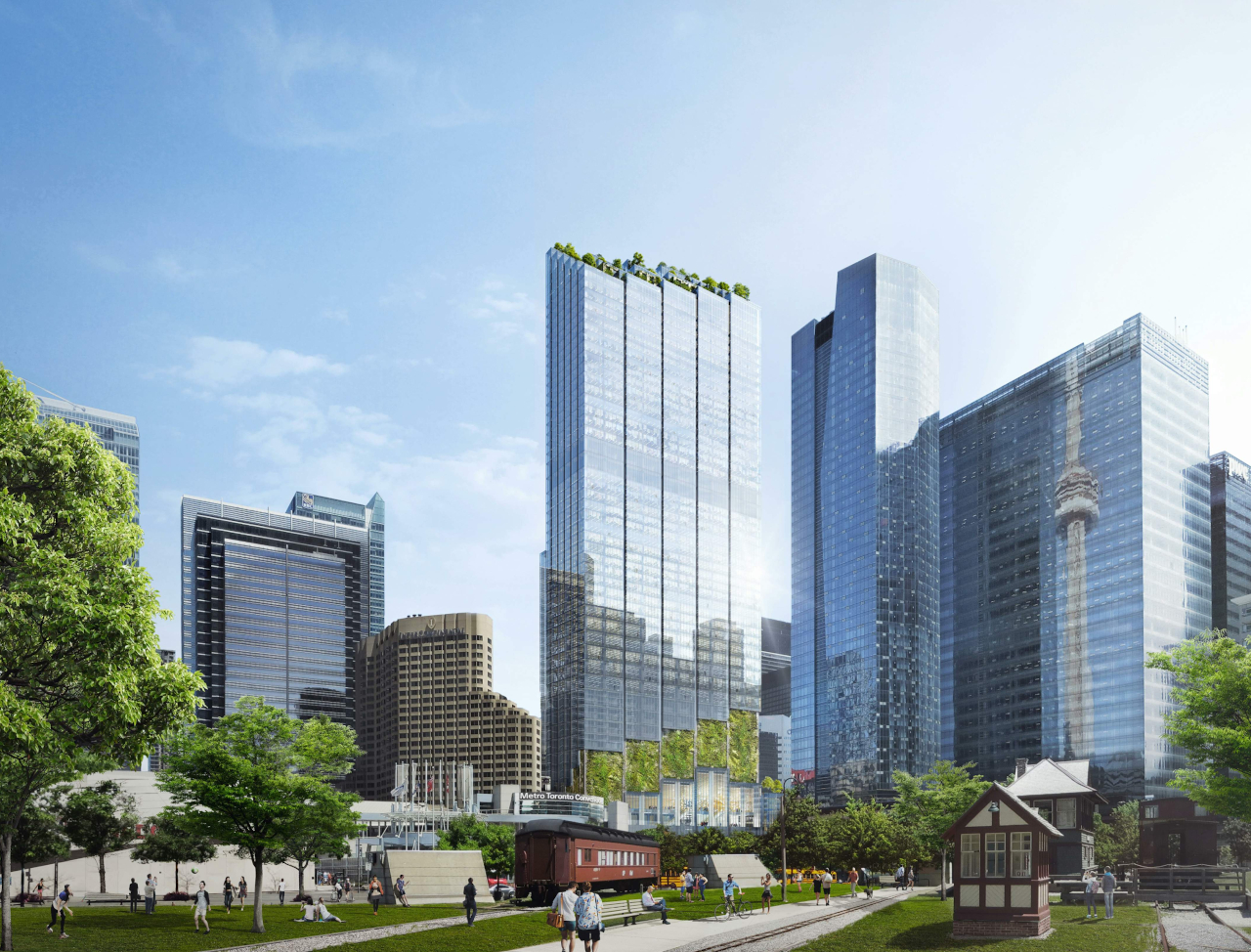
At #4 is Union Park. Designed by Pelli Clarke Pelli Architects and Adamson Associates Architects for Oxford Properties Group, the developer applied for ZBA in August of 2019, and is still waiting on a decision from the City. If approved as proposed, the development would consist of four towers, two residential towers and two office towers, the tallest of which would be a 58-storey/303.26 metre-tall office tower. At over 300 metres, it would be considered a “supertall.”
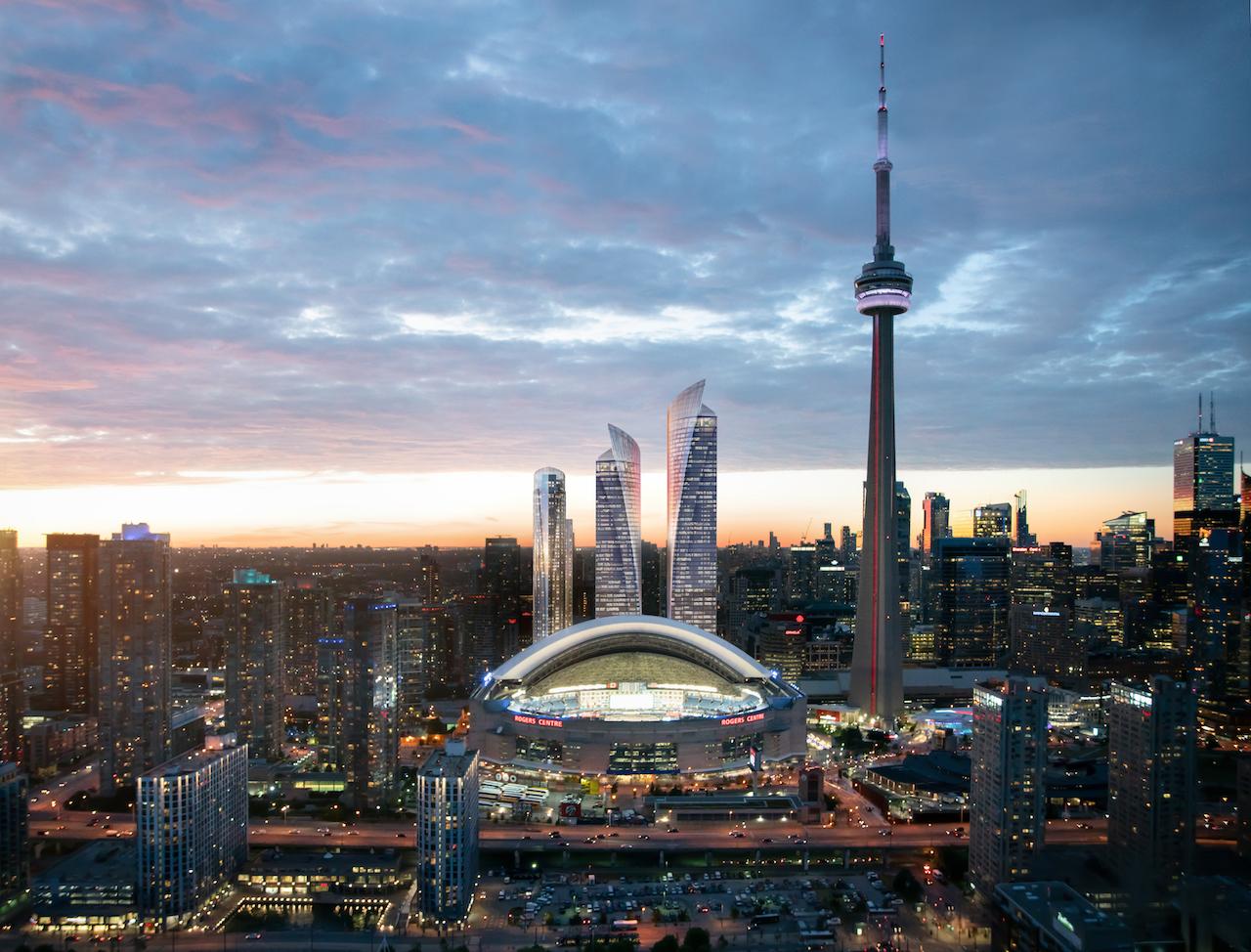
At #3 is the taller tower at Gehry Towers. Designed by the renowned Gehry Partners with Toronto’s BDP Quadrangle, the project is being developed by Great Gulf, Dream Unlimited, and Westdale Properties. Originally proposed as Mirvish+Gehry by Projectcore, applications to the City for ZPA and SPA were submitted in 2012 and 2016, respectively. Changes meant that the ZBA was reapplied for in 2014, and that received approval. Further changes, however, meant another resubmission in 2018, and a revised version of it remains under review. A revised SPA also awaits approval. Once this development gets the go-ahead, the two towers would stand at 84 and 74-storeys (308 and 266.5 metres) on the block bordered by King, Pearl, Ed Mirvish Way and John Street, and house a respective 1170 and 868 residential units, with retail, office, and institutional space in the podiums. The taller building would be another supertall.
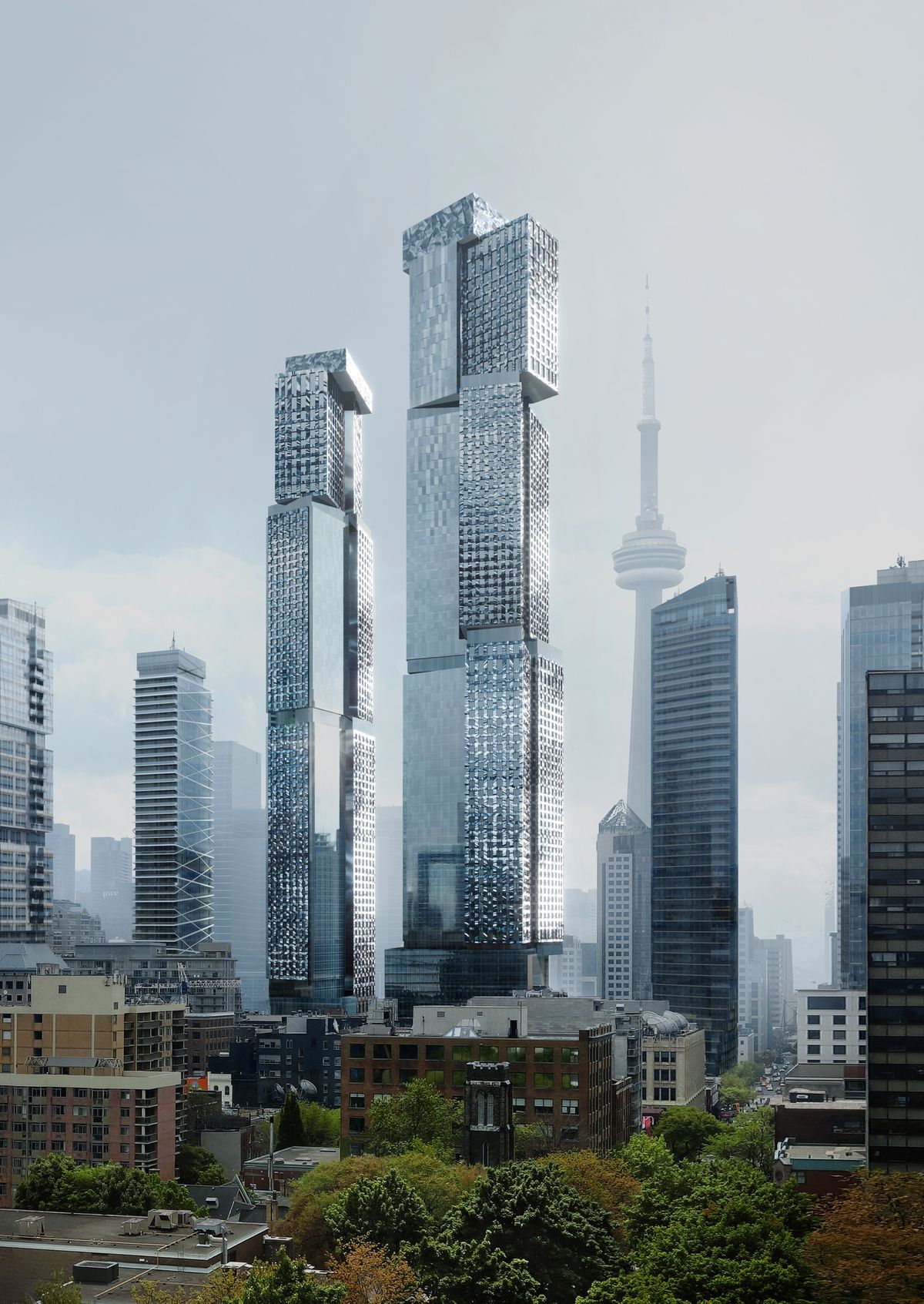
At #2 is 212 King Street West. It is a proposed 80-storey/311.8 metre mixed-use building designed by SHoP Architects for Dream Office REIT and Humbold Properties, on the northwest corner of King Street West and Simcoe Street in the heart of Downtown. The developers submitted applications for ZBA in December of 2020, and for SPA in June of this year. Both applications are currently under review. If approved as planned, the supertall building would house a total of 588 office and rental units.
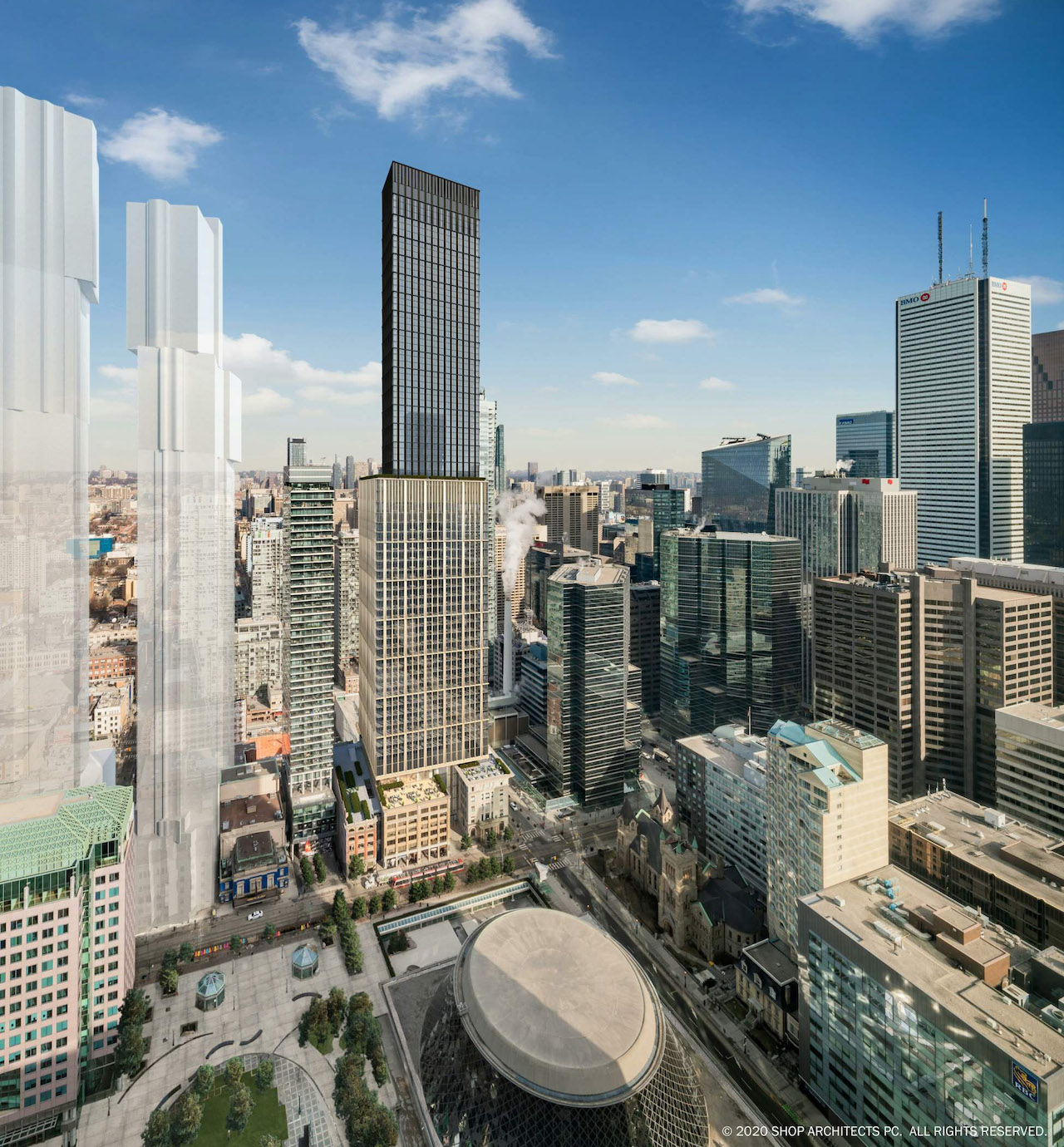
Way up at the top at #1 is the incredibly skinny 1200 Bay. Designed by Swiss starchitects Herzog & de Meuron Architekten with Toronto architects BDP Quadrangle for ProWinko and Kroonenberg Group, this proposal is an 87-storey/324 metre mixed-use building that would house total of 332 residential suites across 71 floors, with 13 floors of office space and two floors of retail closer to ground level. A restaurant would sit up at the very top. Applied for in June of 2020, 1200 Bay awaits a decision from the City on its ZBA application.
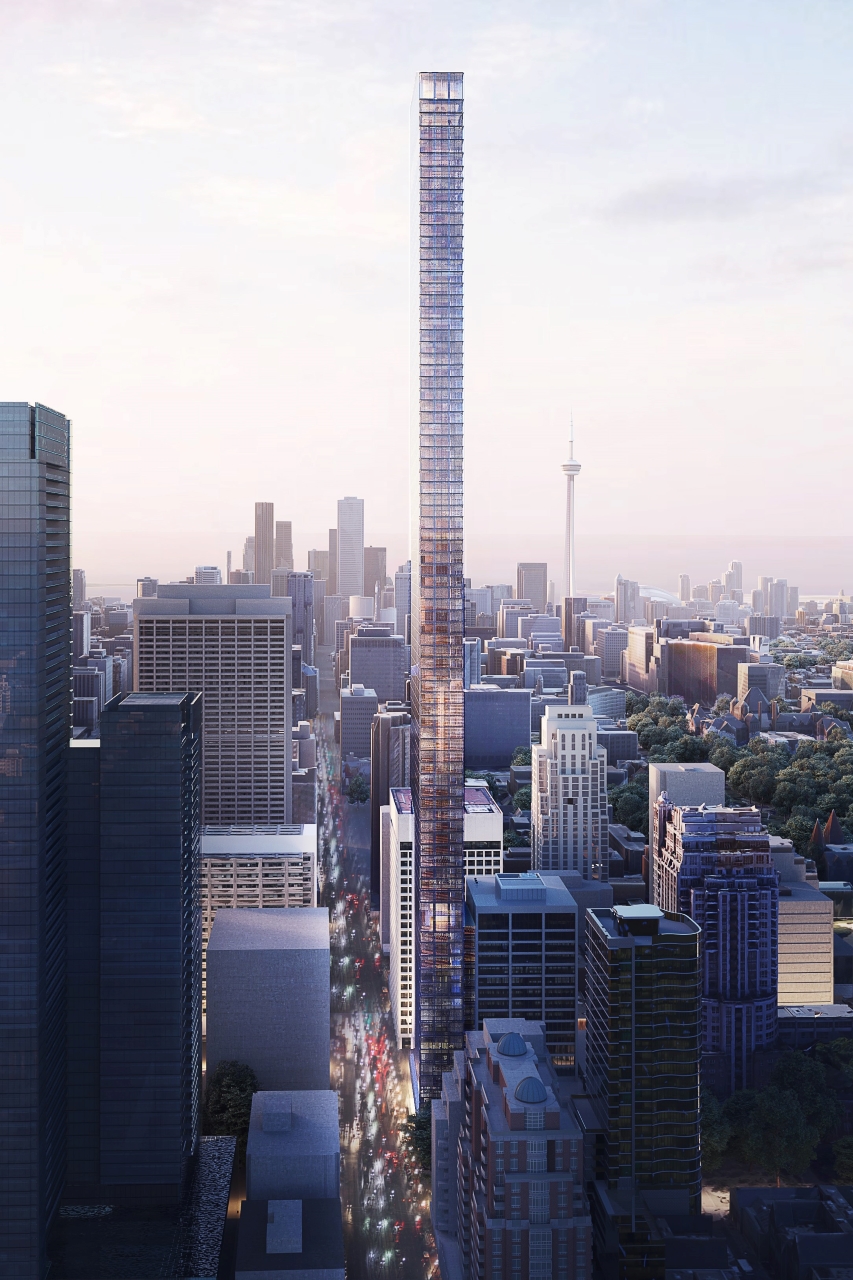
A final note to add would be to include a building that is — unlike any of the other buildings in this list — actually already under construction. The One, an 85-storey mixed-use condo/hotel/retail tower on the southwest corner of Yonge and Bloor streets, is approved at 308.6 metres tall, and should be Toronto’s and Canada’s first building to achieve supertall status… but Mizrahi Developments have applied for approval to extend the height of this Foster + Partners and Core Architects designed building to 338.3 metres. Even with it belonging on a Top Ten Under Construction list, that potential extension to 94 storeys makes The One the actual #1 on this list too, bumping all the proposals on the list down by one.
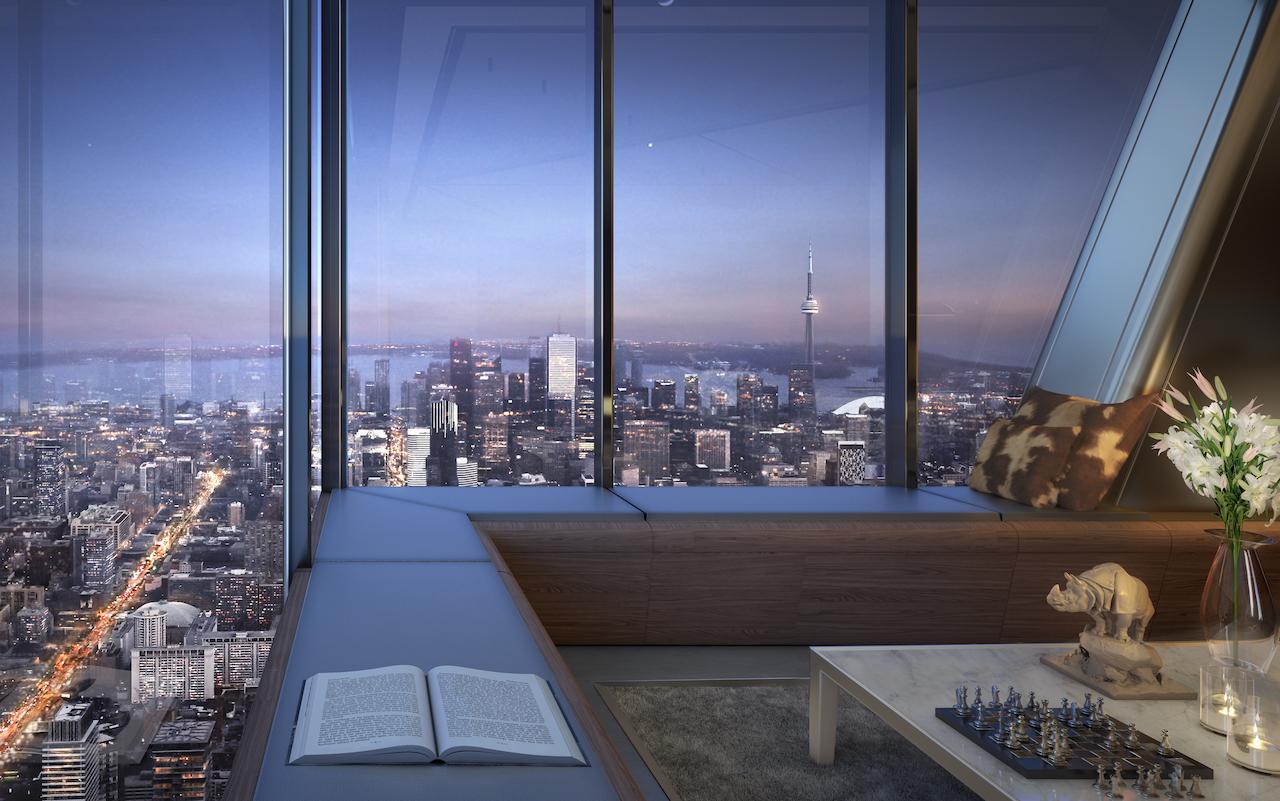
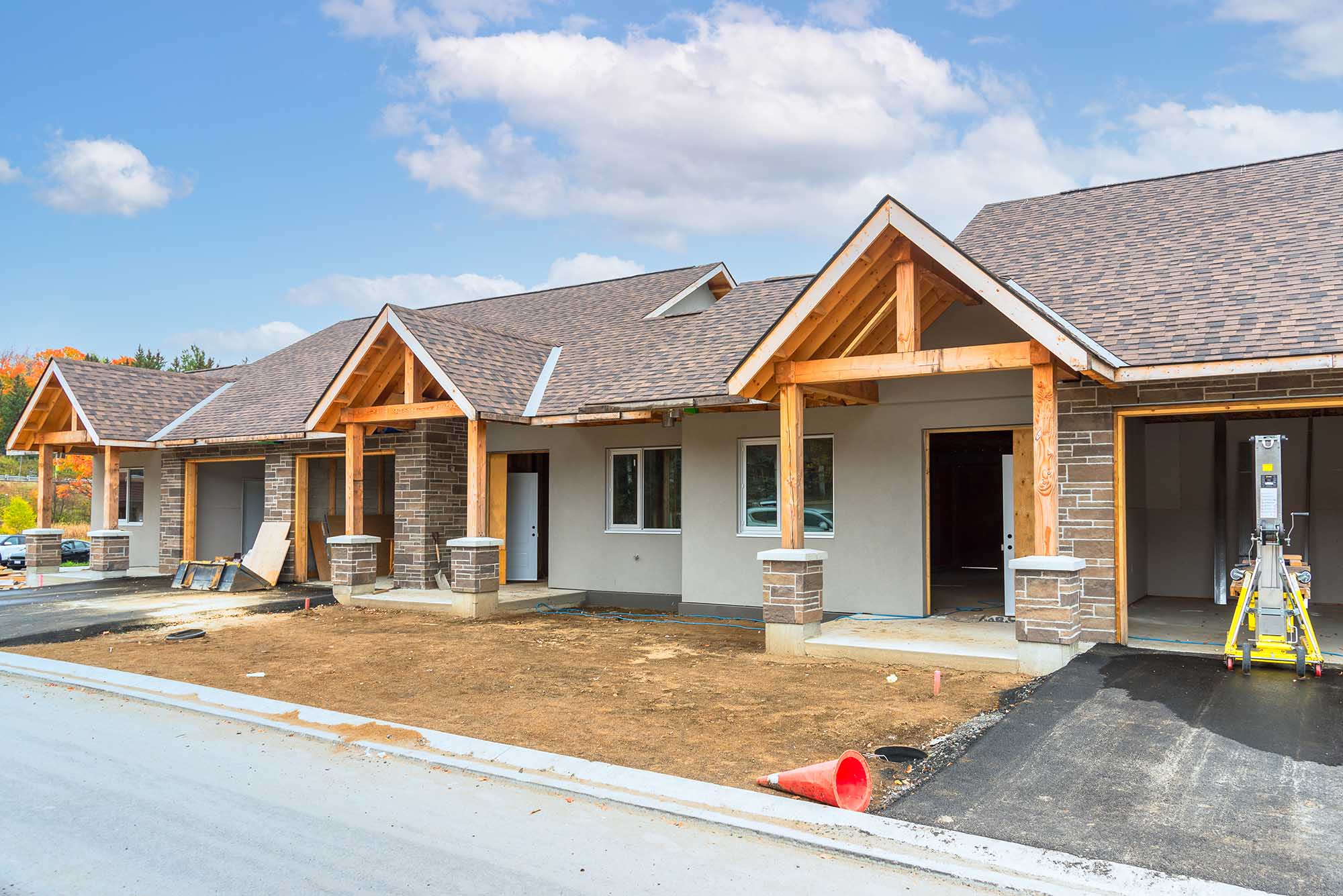
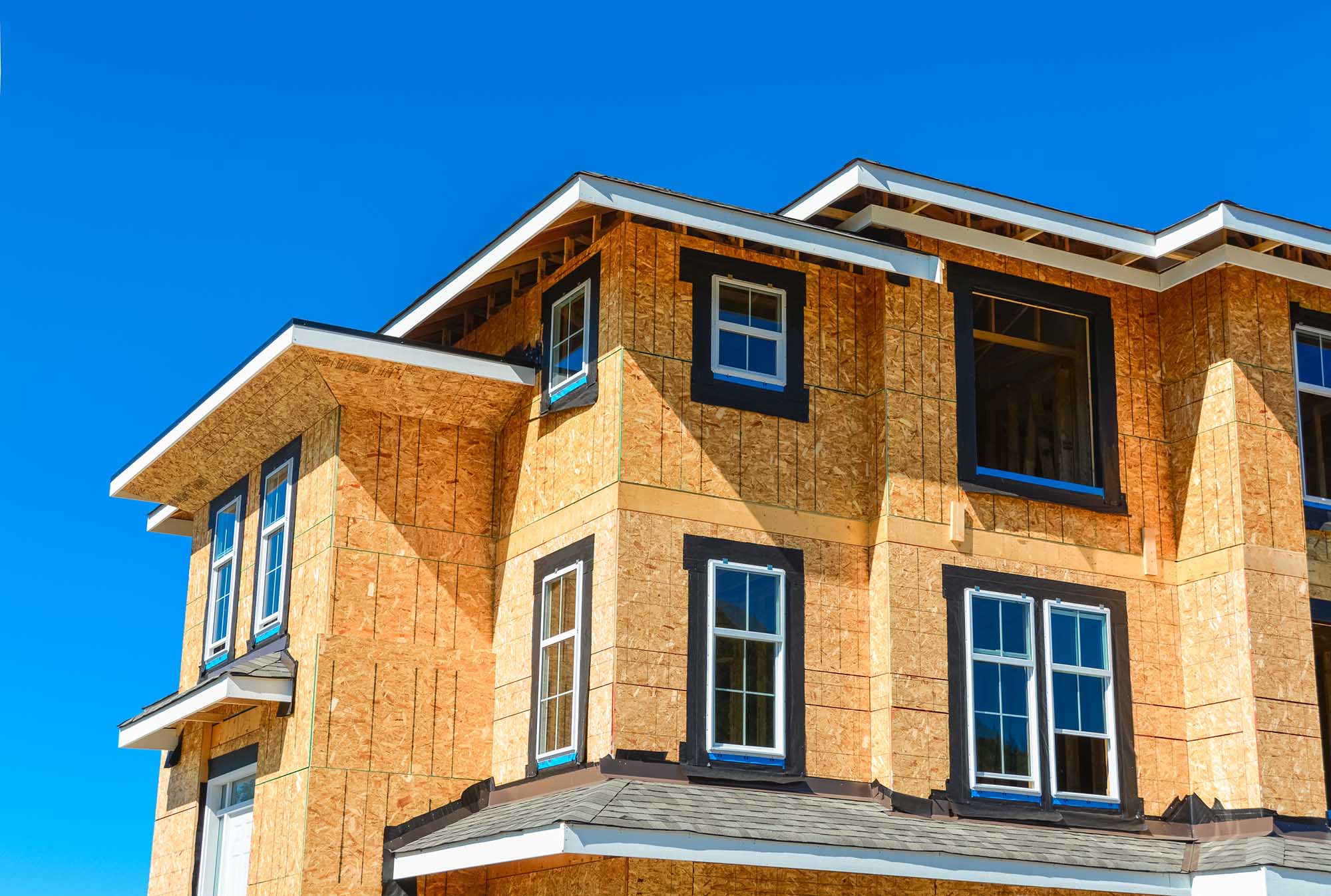













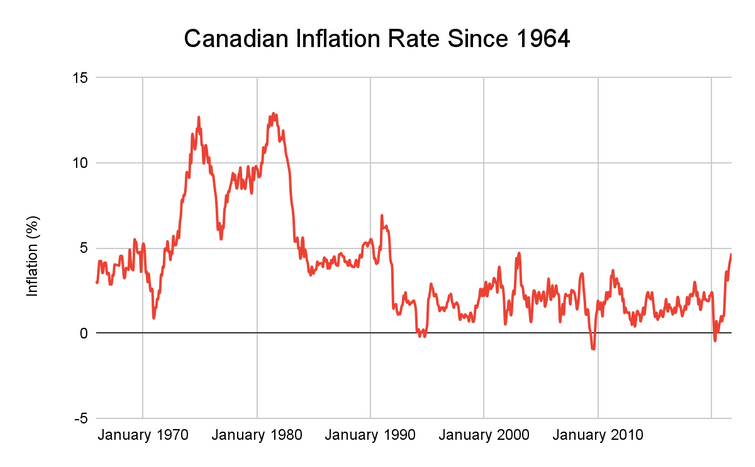
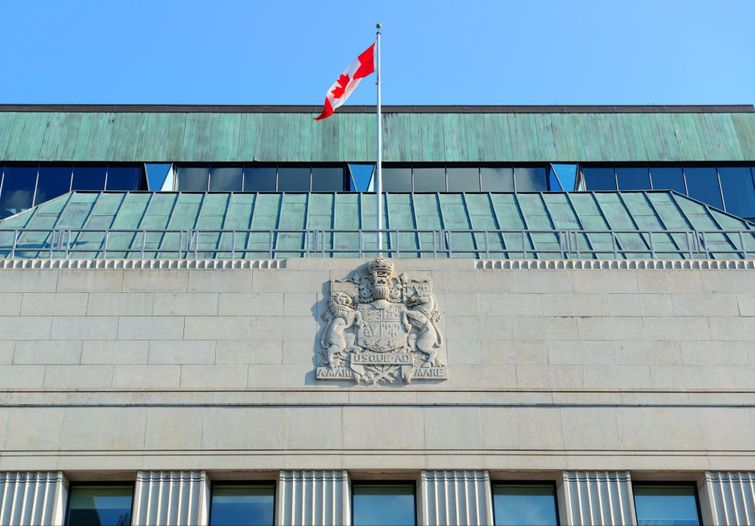



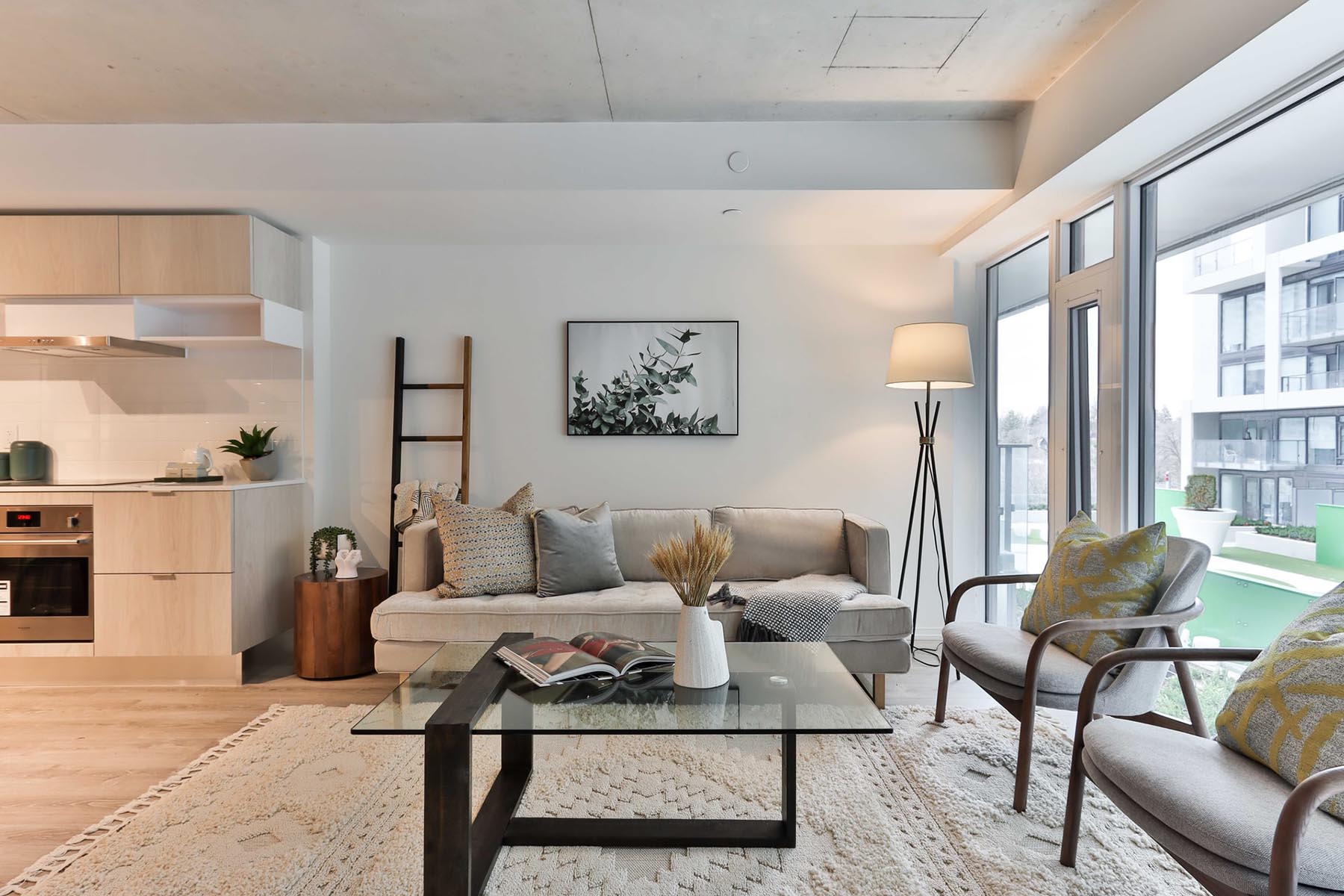
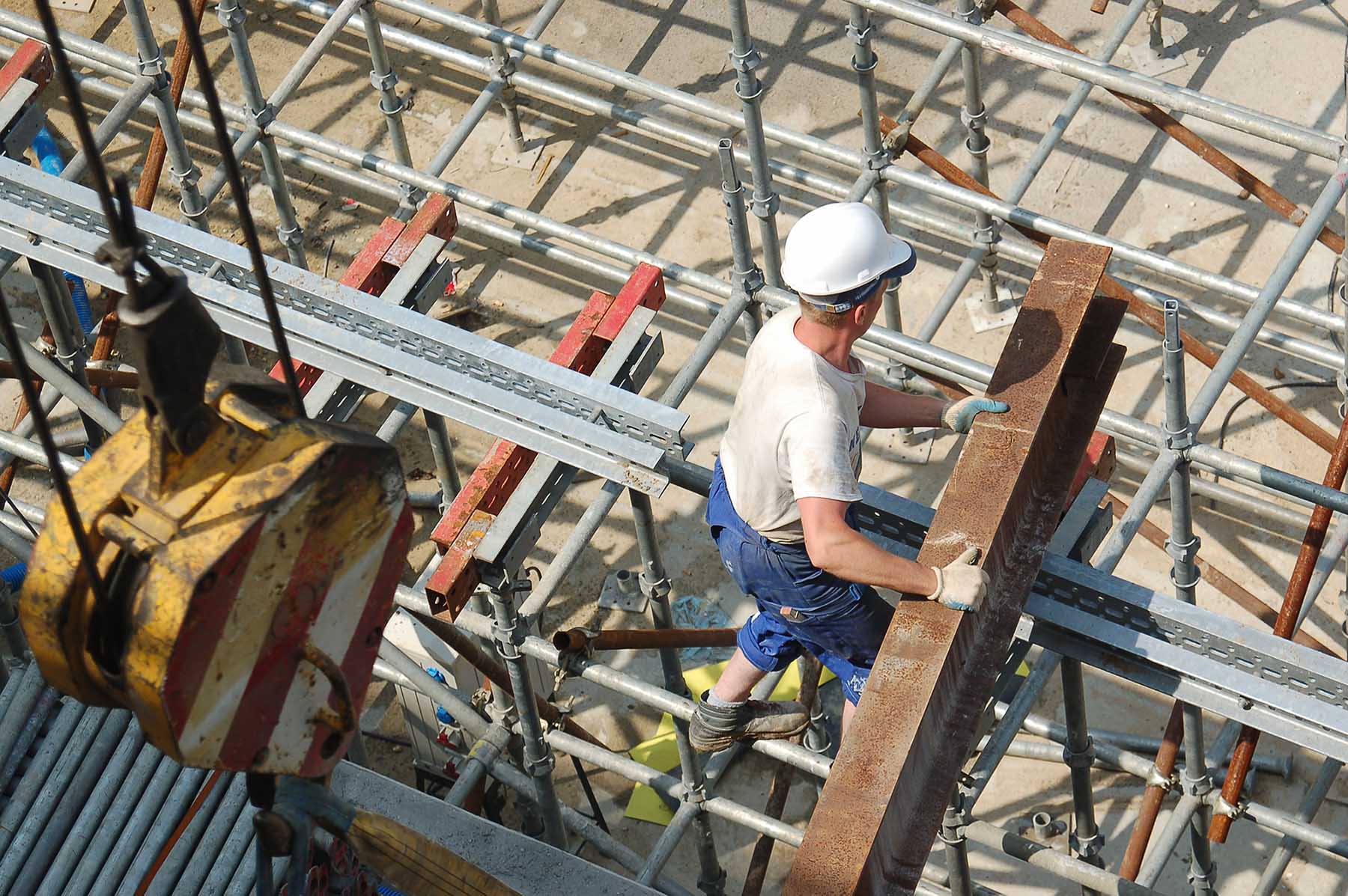
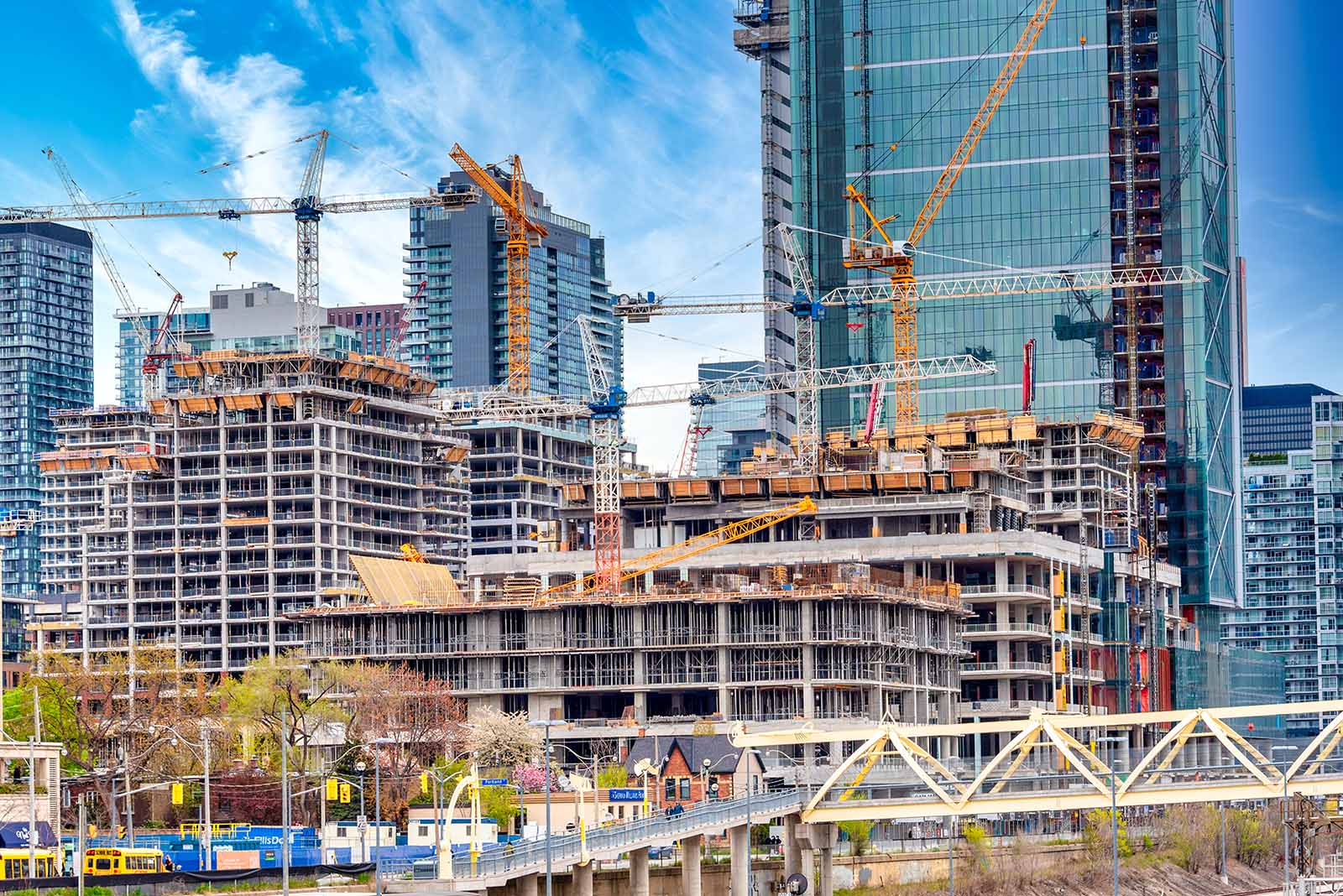
 Maziar Moini, Broker of Record - Home Leader Realty Inc.
300 Richmond St. W., #300, Toronto, ON M5V-1X2
Maziar Moini, Broker of Record - Home Leader Realty Inc.
300 Richmond St. W., #300, Toronto, ON M5V-1X2

